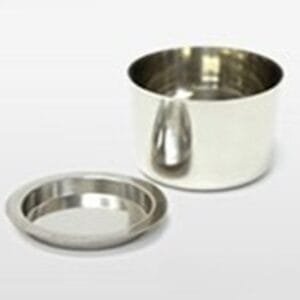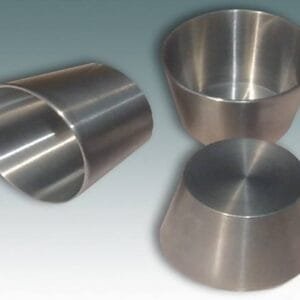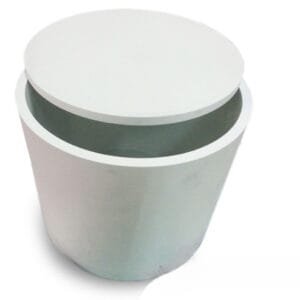Zirconium Crucible Introduction
Zirconium (Zr) is a silver-colored metal with a density of 6.52 g/cm³. Known for its small neutron adsorption cross-section and a relatively high melting point of 1855°C (3371°F), Zirconium stands out for its mechanical strength, especially at elevated temperatures. This makes zirconium crucibles ideal for melting various metals, outperforming most alternatives.
While Zirconium crucibles may be more expensive upfront compared to nickel crucibles, their durability offers significant long-term savings. The number of fusions they can withstand is far higher than other materials, making them more cost-effective in the long run.
Zirconium’s corrosion resistance is another key advantage, thanks to its natural oxide layer, zirconia, which forms almost instantly and provides exceptional protection against corrosion from almost all acids, except hydrofluoric acid (HF). Consequently, HF should never be used as a cleaning agent for zirconium crucibles.
Additionally, Zirconium crucibles require minimal maintenance and, unlike platinum, do not act as a catalyst for oxidation or other reactions, further enhancing their appeal in high-temperature metal melting applications.
Zirconium Crucible Specification
| Material | Zr702, Zr704, Zr705 |
| Thickness | 0.5~50mm |
| Diameter | 40~150mm |
| Type | Cylinder zirconium crucible, Tapered zirconium crucible, Low-form zirconium crucible |
Multiple sizes are available and we do make customized products. Please contact us for customized tungsten crucibles.
Composition of our Zirconium materials
| Zr 702 | Zr 704 | Zr 705 | Zircaloy-2 | Zircaloy-4 | |
| Sn | / | 1~2% | 1~2% | 1.2~1.7% | 1.2~1.7% |
| Fe | <0.05% | 0.1~0.2% | <0.05% | 0.07~0.2% | 0.07~0.2% |
| Cr | <0.05% | 0.1~0.2% | <0.01% | 0.05~0.15% | 0.05~0.15% |
| Ni | / | / | / | 0.03~0.08% | <0.007% |
| Hf | 1~2.5% | <4.5% | <4.5% | <200ppm for the Nuclear industry | <200ppm for the Nuclear industry |
| Nb | / | / | 2~3% | ||
| Zn+Hf | ~99.5% | ~97.5% | ~95.5% | ~98% | ~98% |
Physical Properties
| Material | State | Rm(≥)/MPa | Rp0.2(Pa | A50mm(≥)/% |
Zirconium 702 (UNS R60702) | annealed | 379 | 207 | 16 |
Zirconium 704 (UNS R60704) | annealed | 413 | 241 | 14 |
Zirconium 705 (UNS R60705) | annealed | 552 | 379 | 16 |
Zirconium Crucible Packaging
Our Zirconium crucibles are carefully handled to prevent damage during storage and transportation and to preserve the quality of our products in their original condition.





Reviews
There are no reviews yet.